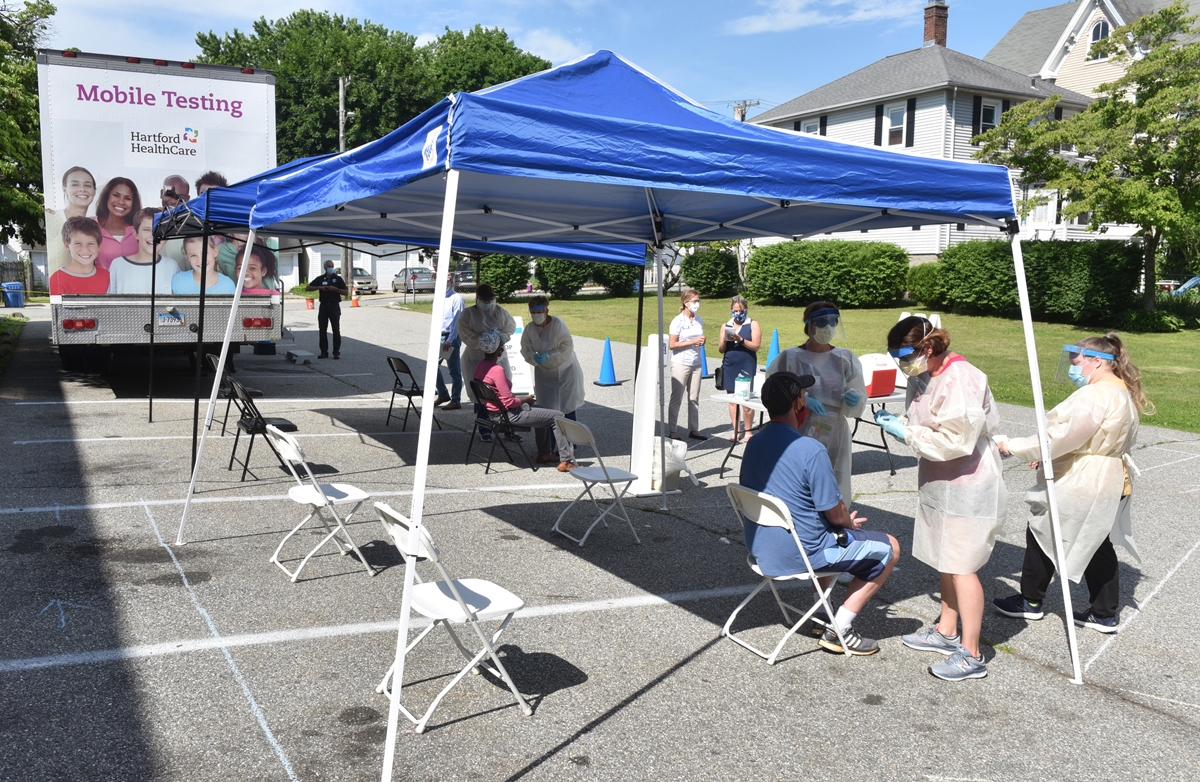<< Back
A Return to Socializing? Precautionary COVID-19 Test Might Not Help

August 17, 2020
To test or not to test. That seems to be the hot question during COVID-19.
Testing to see if you’re infected with the virus might seem like a foolproof way to safely maneuver the social situations you’ve been avoiding for months for fear of contracting – or spreading – the virus. But it really isn’t the way the diagnostic tests currently available on the market should be used.
Testing is available in many locations, including mobile and fixed sites throughout the state by Hartford HealthCare. The most common, the PCR test, uses a swab inserted into the nose or throat to collect cells that are then analyzed for active infection.
The problem, according to Dr. Henry Anyimadu, a Hartford HealthCare Medical Group infectious disease specialist at The Hospital of Central Connecticut, is that the swab captures “a pinpoint in time” in your body’s health. When the molecular matter is examined, it only reveals whether the virus was present at the moment you were swabbed, he said.
The other limitations of the PCR test include:
- The number of false results it produces. These false answers can be both positive and, more often, negative. Negative results, according to research, can be wrong up to 40 percent of the time, giving people a false sense of security.
- The length of time you wait for results. It can take up to a week or more for results, which can make them irrelevant. Consider that you receive negative results six days after your test, but were unknowingly exposed to the virus in the interim. Experts recommend that anyone tested should self-quarantine until the results come back to ensure this doesn’t happen.
- The virus’ incubation period. COVID-19 percolates in the body for four to five days. If you’re tested before it has incubated completely, the results will be negative even though the virus is present. For more accurate results, wait and self-quarantine for several days between a potential exposure and being tested.
While arbitrary testing can’t ensure a safe interaction with a friend or family member, quarantining for 14 days should do the trick. Also ask the others you’ll be with about their behaviors – whether they’ve been social distancing and wearing a mask around others — and possible test results.
“There’s no way to bring your risk down to zero,” Anyimadu said.
He did stress that the test is still an effective tool in identifying the presence of disease.
“If you’re worried you have COVID-19 based on symptoms (or exposure to infected individuals), you should get a test,” he said.
For more information on COVID-19 diagnosis and care, click here.
Not feeling well? Call your healthcare provider for guidance and try to avoid going directly to an emergency department or urgent care center, as this could increase the chances of the disease spreading.
Click here to schedule a virtual visit with a Hartford HealthCare-GoHealth Urgent Care provider.
Stay with Hartford HealthCare for everything you need to know about the coronavirus threat. Click here for information updated daily.
Listen and subscribe to Hartford HealthCare’s More Life series on Apple Podcasts by clicking here.
Stay fit. Stay happy. Stay healthy. And keep on top of COVID-19 with Hartford HealthCare’s daily text alerts. Subscribe by texting MoreLife to 31996.